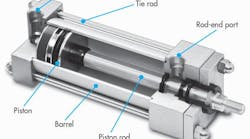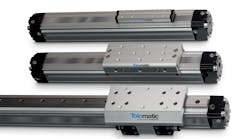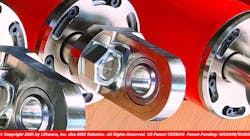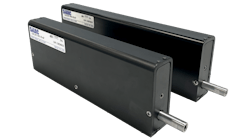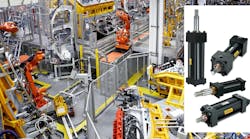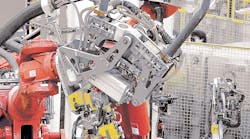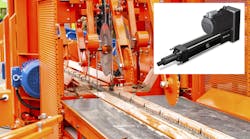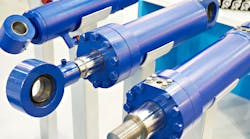In conventional cylinders, of course, a piston pushes or pulls a rod that moves a load through some sort of mechanical linkage. This works great for most applications, but if you’re cramped for space, or need the same area on both sides of the piston, a rodless cylinder may be the best solution. Most rodless cylinders move a load from the piston itself, rather than the rod, which provides several advantages.
What Rodless Cylinders Do Best
Rodless cylinders differ from conventional rod-style cylinders in several ways that offer distinct advantages for certain types of applications. The two main benefits may seem contradictory at first—rodless cylinders conserve space, but they also allow for a longer stroke within the same space as a conventional cylinder. They save space because the stroke is contained within the envelope of the cylinder body. With a rod-style design the stroke only begins at the point at which the rod leaves the tube, so the space required includes the length of the cylinder body plus the length of the stroke. With a rodless design, the full stroke fits in the footprint of the cylinder. In other words, rodless cylinders can deliver the same stroke in roughly half the space of a rod-type cylinder.
So how can rodless cylinders deliver even longer strokes? The constraint for rod-type cylinders is rod length. The longest stroke for which a rod can be constructed practically is approximately 12 ft. It would require specialized material to construct a rod longer than that. In contrast, it is possible to construct a rodless cylinder with a stroke up to 27 ft. using lightweight, extruded aluminum alloy.
